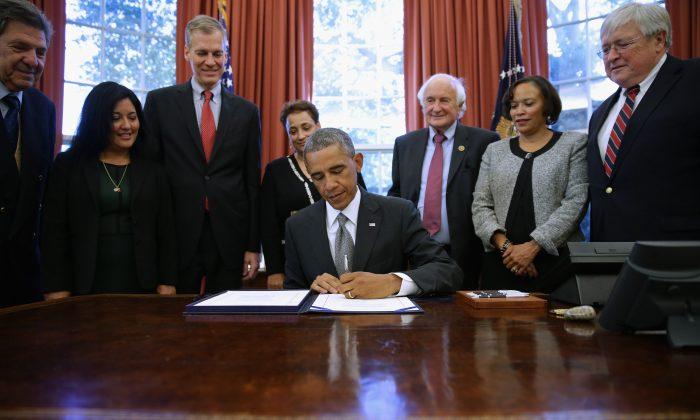In his 2016 fiscal year budget, President Barack Obama proposes giving the Department of Health and Human Services (HHS) the power to effectively set drug prices for Medicare drug benefits. The budget forecasts that the change, along with a few other modifications to Medicare Part D, would save Medicare and Medicaid $142 billion over 10 years.
In an interview with Vox, Obama argued that the proposal was essentially a free-lunch. Drug prices would go down, but pharmaceutical innovation would continue unabated.
“When you look at the number of breakthrough drugs and the amount of money that drug companies now are putting into research and where they’re putting it, a whole lot of it is actually in redesigning, modestly, existing drugs so they can renew patents and maintain higher prices and higher profits,” Obama said.
“So there is a lot of savings that could be achieved while still making sure that our drug industry is the best in the world, and will still be making a healthy profit,” he added.
The budget calls for cutting the number of years pharmaceutical companies have exclusivity rights to new biologic drugs from 12 to 7, and eliminating exclusive rights for minor redesigns of brand-biologic drugs altogether.
Biologic drugs are made from living cells and complex enough that they cannot easily be duplicated. They treat a range of diseases from cancer to diabetes. The market for biologics is expected to grow to $250 billion globally by 2020, according to IMS Health. The market for “biosimilars,” or generic versions of biologics, is expected to make up 4–10 percent of that market.
An advisory panel for the Food and Drug Administration made its first recommendation in January, for the approval of Zarxio, a biosimilar that treats cancer, and big pharmaceuticals are already betting on the growing market. Last week, Pfizer offered $15.2 billion for Hospira, which sells biosimilars in Europe, according to Dealbook.
The proposal likely won’t go anywhere with Republicans in control of Congress. They had filibustered an earlier attempt of Medicare drug cost reform in 2007, but the idea continues to hold sway as healthcare costs continue to rise.
The research and production of biosimilars is expensive, and may appear redundant, but they cut down drug costs by undermining the monopoly that companies have on brand-name biologics. To cut down overall drug costs while discouraging the development of biosimilars requires the HHS to use its market power to push down the cost of biologics.
Obama’s call for scaling down the profits of pharmaceuticals comes at a time of decelerating innovation in the field. The invention of newfangled “blockbuster” drugs is already increasingly scarce, and giving the HHS the power to lower drug prices would lower incentive for future research.
Indeed, Pfizer’s bet on Hospira comes at a time when generics are undercutting the profit margins of pharmaceuticals, who are investing in biologic drugs because of their difficulty to duplicate. A 2014 research paper from the National Bureau of Economic Research found that a 10 percent increase in the market penetration of generic drugs was correlated with a 7.9 percent decline in early-stage research.
New drugs are expensive and risky to develop, and a study last year from the Tufts Center for the Study of Drug Development found that the typical drug costs $2.6 billion to research, test, and bring to the market. Part of the rise in the cost of drug development comes from heightened standards for drug trials.
If suppressed drug prices won’t hurt innovation, it will only be because the medical industry has run out of things to innovate on. Many naysayers guessed exactly that when the FDA only approved of 25 new drugs in 2009, down from 53 in 1996, but that number has since bounced back, and 2014 saw the approval of 41 new drugs.






Friends Read Free